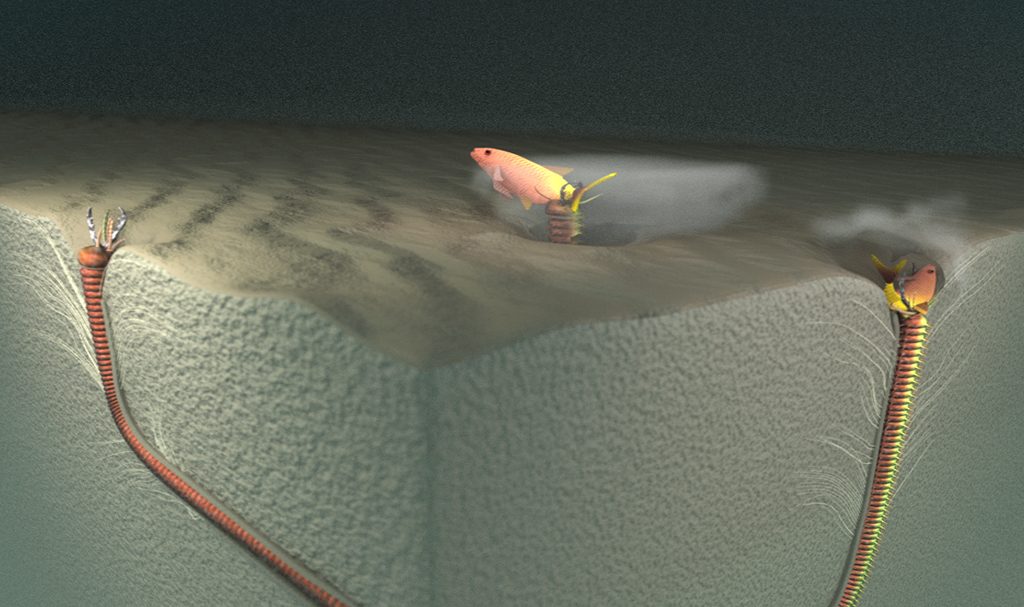[ad_1]
AsianScientist (Feb. 1, 2020) – From unlikely innovations that pave the way for human space settlement to traces of ancient marine worms from millions of years ago—Asian Scientist Magazine has covered several exciting scientific developments in just one month. Outside the laboratory, we also shone a light on wide-reaching issues affecting the scientific community and beyond.
Amid an ambitious push to boost the nation’s scientific standing, the Chinese Academy of Sciences flagged several international journals posing a risk to the reputations of local researchers. Meanwhile, COVID-19 continues to cast a dark shadow upon Japan as researchers show how the country’s suicide rates spiked during the pandemic’s second wave.
In spite of the highs and lows of 2021, these five pieces from January mark a compelling start to a year that is sure to be filled with progress.

Last year, China took the top spot as the world’s top scientific nation—producing almost a fifth of all peer-reviewed papers between 2016 to 2018. Many of these papers, however, ended up in international journals.
In recent years, improving the standards of local journals has become a national priority. To encourage researchers in China to publish more of their groundbreaking work in homegrown journals, the Chinese Academy of Sciences (CAS) identified 65 ‘risky’ international journals to avoid.
Incredibly, even journals from major publishers like Springer Nature and John Wiley & Sons were flagged as possibly predatory. Ultimately, the list aims to simultaneously protect and advance the reputation of researchers in China by ensuring their works are published in prestigious, high-quality journals

As companies like SpaceX race to build permanent settlements on other planets, scientists are trying to figure out how to feed humans once we get there. Researchers from the Tokyo University of Science have discovered that human urine could be the key to growing food in space.
After all, urine is rich in nitrogen in the form of ammonia. In space, human urine could therefore be converted into fertilizer, similar to how farmers have used animal waste for thousands of years. Accordingly, the team developed a method to extract ammonia from urine samples. Though their research is still at preliminary stages, the researchers hope they can someday make sustainable space agriculture a reality.

All over the world, COVID-19 has led to a ‘hidden epidemic’—namely, a sweeping rise in mental health issues from healthcare workers to students. To investigate the mental health toll of COVID-19 in Japan, researchers from the Tokyo Metropolitan Institute of Gerontology and Hong Kong University of Science and Technology analyzed the suicide rates of the entire Japanese population during the pandemic.
While suicide rates declined during the pandemic’s first wave, they observed a spike in suicide among women, children and adolescents during the second wave. According to the researchers, this spike could be partly attributed to the uneven impact of COVID-19 on female-dominated industries and the additional burden of stay-at-home orders on working mothers. The authors hope that their study will inform national policy and help address these harrowing rates.

A fearsome predator that ambushes prey from its seafloor burrow, the Bobbit worm gets its name from Mrs. Lorena Bobbit—best known for castrating her husband with a kitchen knife. Though such predatory worms have existed since the Paleozoic period 540 million years ago, their bodies are made up of soft tissue and are rarely preserved as fossils.
Using trace fossils—impressions left in geological features over time—a team from Taiwan found evidence that ancestors of the Bobbit worm were burrowing into the sediment and attacking unsuspecting prey as far back as 23 to 5.3 million years ago. Such findings give us a glimpse into the exciting and diverse ecosystem that once existed within ancient oceans.

According to the United Nations, almost two-thirds of the world’s population are expected to face regular water shortages by 2025. As the air we breathe contains enough water to fill almost half a trillion Olympic swimming pools, the question now is how to extract it and turn it into clean, potable water.
Researchers from the National University of Singapore have created a new type of aerogel that gathers moisture from the air and releases it in the form of liquid water. Just one kilogram of this novel material can generate enough drinking water from the air to meet a household’s daily needs of roughly 17 liters. The team hopes to continue developing the aerogel with industry partners for potential use in survival kits, endurance sports and within households.
———
Copyright: Asian Scientist Magazine; Photo: Shutterstock.
Disclaimer: This article does not necessarily reflect the views of AsianScientist or its staff.
[ad_2]
Source link